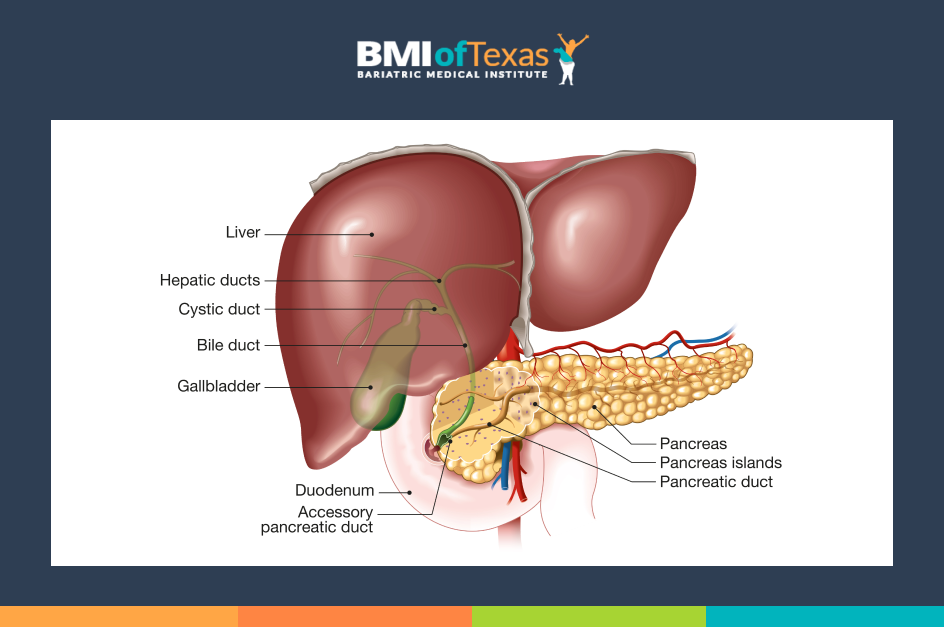Gallbladder Surgery Introduction
The gallbladder is a small sac-like organ located beneath the right lobe of the liver. Its function is to store the bile made by the liver until food is ingested. When food is consumed, the gallbladder is stimulated to contract and release its contents into the intestine. The bile then begins to digest the food. Most people never have any trouble with their gallbladder.
However, the gallbladder can become sick causing pain or other abdominal symptoms. The most common reason for this is gallstones (calculi). Stones can form in the gallbladder when concentrations of cholesterol and bile salts become favorable. Another way the gallbladder can cause problems is by functioning poorly. This condition is known as biliary dyskinesia. This condition can be due to a tortuous cystic duct with tiny valves or a dysfunctional contraction.
Obstruction of the gallbladder due to stones or biliary dyskinesia results in pain in the right upper abdomen. Occasionally there are other symptoms like nausea, vomiting, or diarrhea. The gallbladder can even become infected or inflamed. This is known as cholecystitis. These conditions usually require surgical removal of the gallbladder
If stones escape the gallbladder they can cause obstructions in the main bile duct and also in the pancreas. Obstruction in these areas can cause jaundice, liver dysfunction, and potentially severe infections in the bile duct and pancreas
Attempts to dissolve or obliterate gallstones are generally not successful and can potentially make matters worse. If you are experiencing symptoms from your gallbladder, the standard treatment is surgery.

Gallbladder Diagnosis
In addition to a thorough history and physical exam, there are several diagnostic tests which help doctors detect problems with the gallbladder. These include:
- Blood-work
- Ultrasound
- CT scan or MRI
- HIDA scan with CCK (this tests the function of the gallbladder)
Laparoscopic cholecystectomy (removal of the gallbladder)
This procedure is generally performed using 3 or 4 tiny incisions to remove the gallbladder. Drs. Duperier & Englehardt perform both laparoscopic and robotic gallbladder surgeries.
Occasionally if there are stones in the main bile duct another procedure may be necessary to remove them. Usually this can be done with a scope passed down the patient’s mouth. In rare cases where this is unsuccessful, BMI surgeons are able to remove these stones with a laparoscopic procedure.
While a laparoscopic cholecystectomy is an extremely common operation and has low risk of peri-operative problems, there can be complications as with any operation. The operative mortality for these procedures is less than 0.01%. Other risks include infection, bleeding, hernia, wound problems, damage to intra-abdominal structures, bile leak, fistula, retained stone, or failure to cure or relieve symptoms. Occasionally patients will experience transient diarrhea after surgery (post cholecystectomy diarrhea) This will almost always resolve on its own but occasionally requires medical treatment.
When taking out your gallbladder, we typically will inject you with iCG (indocyanine green) ahead of surgery as this will “light up” your bile ducts and can provide excellent visualization and identification for increased safety for your bile ducts during surgery.
Gallbladder Recovery
Most patients can go home the same day. Typically you can expect to take 4-6 days off of work. There are no physical or dietary restrictions on your activity after surgery.
Do you know if you qualify for weight loss surgery? Take the Quiz

